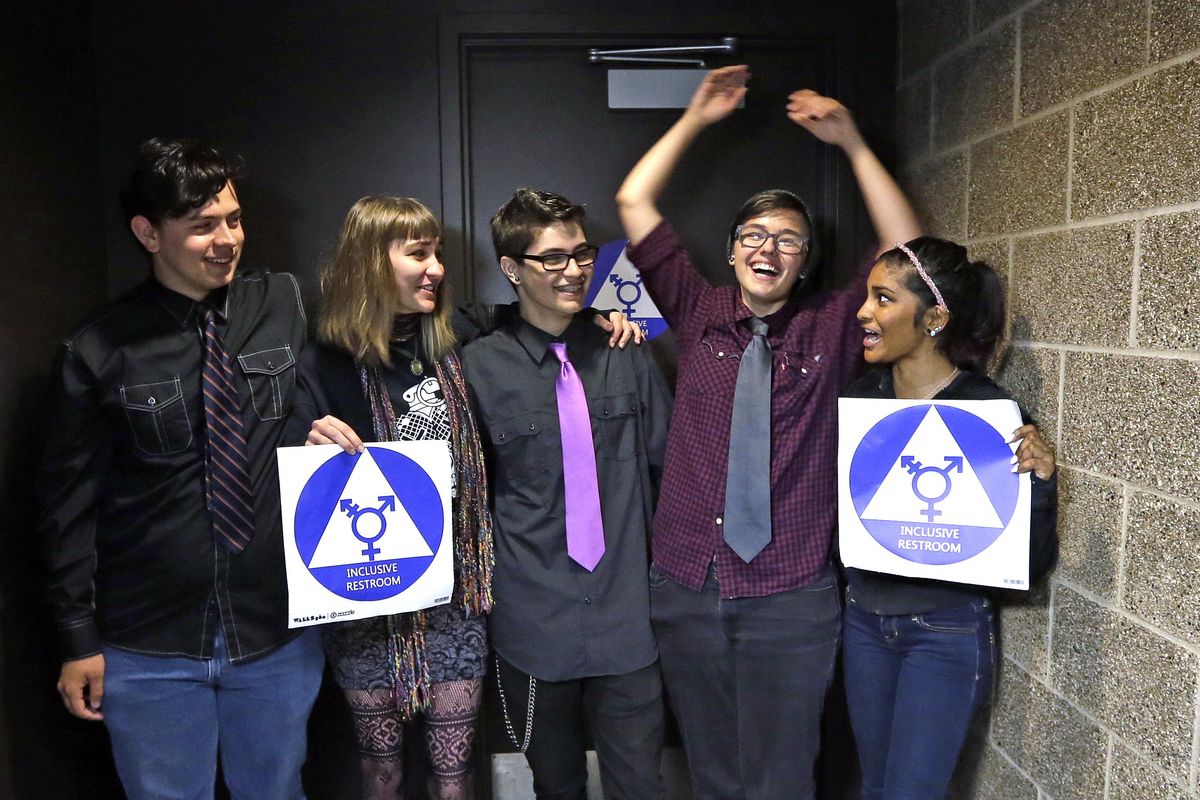Transgender bathroom choice nothing new for Seattle schools

SEATTLE – In progressive Seattle, a presidential order that public schools give transgender students access to the bathrooms matching their gender identity won’t require a shift.
While the debate has reached a fever pitch in other parts of the country, the city’s public schools have accommodated transgender students in the bathrooms and locker rooms consistent with their identity since 2012. It stands in stark contrast to places like North Carolina that recently passed divisive restrictions.
The Seattle school district celebrated the opening of its latest gender-neutral bathroom Tuesday with a large gathering of students and faculty at Nathan Hale High School. Nearly half of the city’s 15 public high schools have restrooms that can be used by people of any gender, with one dating to the 1990s.
To Destin Cramer, 17, the inclusive bathroom is another jolt for a movement in full swing in Seattle and gaining momentum nationally. Cramer is a transgender student at Nathan Hale who created the gender-neutral bathroom for his senior project.
“I feel like it’s going to start making a domino effect and everyone’s going to start realizing this needs to happen in order for transgender students to feel more included,” he said.
While Washington state has asked schools to include bathroom accommodations for transgender students for four years, it isn’t immune to the clashes playing out nationwide. Conservatives are trying to get a measure on the November ballot that would force public schools to require students to use facilities corresponding with their biological gender at birth.
But President Barack Obama said last week that schools nationwide must treat transgender students in a way that matches their gender identity.
The order meant a lot to Cramer, who said he has seen transgender students who are bullied or excluded do poorly in school and suffer from depression. Transgender people who experienced rejection, discrimination, victimization or violence have a higher risk of attempting suicide, according to an analysis of the National Transgender Discrimination Survey by the Williams Institute at the University of California, Los Angeles.
Cramer said gender-neutral bathrooms are another step forward for those who don’t want to choose a sex-segregated restroom. Nathan Hale has sex-specific bathrooms as well as the neutral facility, which has five stalls and a sign reading “inclusive restroom.”
Erin Shafkind, a teacher at the school, said transgender students would often use the restroom in the school nurse’s office, crossing campus so they wouldn’t have to use a gender-specific bathroom.
Senior Jakob Ainsworth said he supports the neutral bathroom and expects many people to use it.
“I believe this is going to be very helpful for any transgender student at this school, and hopefully will move on to other schools,” he said.
The debate flared in Washington state after officials in late December began officially requiring public buildings to let transgender people use the facilities matching their gender identity.
The rule has faced challenges, including failed efforts to repeal it in the Legislature and the effort to gather enough signatures to qualify a restrictive ballot measure.
GOP state Sen. Doug Ericksen of Ferndale, who sponsored an anti-access bill that narrowly failed, said local school boards should decide bathroom policies.
“I think most people in Washington state feel that President Obama has grossly overstepped his executive authority,” Ericksen said.
Seattle schools have already decided the issue with community support, said Eyva Winet, assistant principal at Nova High School, a small alternative school has had a gender-neutral bathroom for about 20 years.
“I don’t think his statement is that Earth-shattering to us out here on the West Coast,” Winet said of Obama’s directive. “But it’s pretty exciting that there is a national move toward anti-discrimination laws similar to what we have in Washington state.”